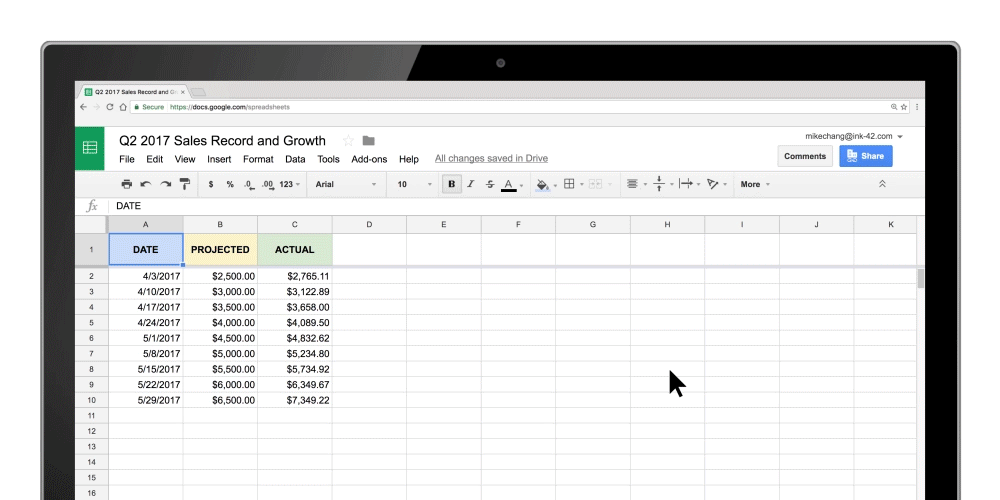Google Sprinkles AI on Its Spreadsheets to Automate Away Some Office Work
In Google’s commercial for its virtual assistant, people ask it to play dance music, videos, and set a timer. A new feature from the search giant that lets you ask questions of its online spreadsheets is less flashy, but it could be the start of something that has a huge impact on how some companies operate.

Instead of creating charts from data the way office drones have done it for decades, you can now simply ask for what you want—for example by typing “histogram of 2017 ice cream sales.” Google’s machine-learning algorithms do the rest.
The new feature joins one introduced last year called Explore that allows you to type phrases such as “what are average sales on Sundays” instead of creating formulas. Together they are an example of advances in machine learning that are transforming office work and the economy.
How exactly those advances are changing the job market is subject to some debate. Some predictions have it that machine learning has become so capable, and is improving so quickly, that it won’t be long before many jobs, such as driving trucks, are completely eliminated.
A milder view suggests that jobs will be radically changed, but not eradicated, as software takes over certain tasks. A study from McKinsey published in January predicted that half of today’s workplace tasks could be automated by 2055—but that only 5 percent of jobs would no longer need humans at all.
Google will surely add more automation features to Sheets and the rest of its office suite. Arguing that features powered by machine learning make its customers more productive has become a core part of the company’s effort to win market share away from Microsoft.
Not even Google can have much idea of how companies will use the time saved using its new feature. In a large company, it might be enough to shrink a team of analysts, or avoid expanding it. Or it might free those already on staff to do deeper explorations that have a bigger impact on the bottom line.
What seems more certain given the many limitations of today’s machine-learning technology is that spreadsheets themselves will be here for a good while longer. Automating the act of making a chart out of data in neatly labeled columns is one thing. Creating a machine that can generate the kinds of questions and ideas that we need charts to answer and explore is quite another.
(Read more: “How Technology Is Destroying Jobs,” “China Is Building a Robot Army of Model Workers,” “Basic Income: A Sellout of the American Dream,” “As Goldman Embraces Automation Even the Masters of the Universe Are Threatened,” “The Missing Link of Artificial Intelligence”)
Deep Dive
Artificial intelligence
Large language models can do jaw-dropping things. But nobody knows exactly why.
And that's a problem. Figuring it out is one of the biggest scientific puzzles of our time and a crucial step towards controlling more powerful future models.
Google DeepMind’s new generative model makes Super Mario–like games from scratch
Genie learns how to control games by watching hours and hours of video. It could help train next-gen robots too.
What’s next for generative video
OpenAI's Sora has raised the bar for AI moviemaking. Here are four things to bear in mind as we wrap our heads around what's coming.
Stay connected
Get the latest updates from
MIT Technology Review
Discover special offers, top stories, upcoming events, and more.